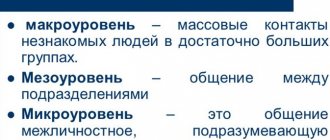Speech communication is an active process of verbal communicative interaction between its participants (senders and recipients of information), which is characterized by a certain motive and is aimed at achieving a specific goal. The communicative process proceeds based on feedback in specific types of verbal activity.
Speech communication is organically included in all kinds of activities of an individual, for example, professional or social, since activity is impossible without communication. Verbal communicative interaction can be realized between several individuals or at least two. Verbal communication is reciprocal and purposeful as well as social. The form of manifestation of verbal communication is considered to be verbal behavior and responses of communication partners.
Speech etiquette
Speech etiquette and rules of communication represent a system of norms of verbal behavior and unchanging formulas for polite communications. Mastering the etiquette of verbal communication helps to gain authority, creates trust and respect. Mastering the canons of verbal etiquette and observing them contributes to the feeling of being a confident person and not experiencing a feeling of awkwardness and difficulties in communication.
Mandatory adherence to verbal communication etiquette in business interactions leaves partners with a pleasant impression of the individual and the company as a whole, and maintains its positive and attractive image.
The etiquette of verbal communication is determined by national specifics, since each nation, in the process of its evolution, developed its own system of rules of verbal behavior. In our modern society, such qualities as correctness, tact, courtesy, courtesy, tolerance, goodwill, and restraint are of particular value.
Tactfulness is an ethical canon that requires the speaker to understand the interaction partner, avoid inappropriate remarks and questions, and discuss unpleasant topics.
Attentiveness presupposes the ability to anticipate possible interrogative remarks and wishes of a communication partner, a willingness to discuss in detail with him all the important points for the conversation.
Tolerance presupposes a calm attitude towards possible differences in positions and views, and avoidance of sharp criticism in judgments. It is necessary to respect the views of other individuals and strive to understand why they formed this or that position. Closely related to tolerance is the personal quality of self-control, which is the ability to calmly and restrainedly respond to sudden or tactless and questioning remarks from an interlocutor.
Goodwill is necessary not only in relation to communication partners, but also in the process of the conversation itself, in its form and content, in the choice of words and intonation.
The etiquette of verbal communications has a close connection with ethics, which prescribes the canons of moral behavior. Etiquette involves the use of certain styles of behavior and outwardly expressed politeness formulas in specific verbal actions in verbal communications.
Following the requirements of etiquette will be considered deception of others and hypocrisy when violating ethical standards. At the same time, ethical behavior that is not accompanied by adherence to the canons of etiquette will inevitably make an unfavorable impression and lead to doubts about the moral qualities of the individual. Therefore, when communicating verbally, it is necessary to follow a whole set of ethical and etiquette canons, which are closely interrelated. Such a complex presupposes, firstly, a respectful and friendly attitude towards the interlocutor. It is strictly forbidden to inflict insults, insults, or express disdain on your interlocutor using verbal means. It is also recommended to avoid direct negative assessments of the interlocutor’s personality in a conversation; it is only allowed to evaluate specific actions, while maintaining tact.
In the intelligent communication of educated individuals, the use of rude words, obscene expressions, arrogance, and cheeky speech formulas is unacceptable. In practical terms, such verbal formulations are also considered inappropriate, since they will never lead to the achievement of the desired communication results.
Politeness in communicative interaction is aimed at understanding the situation as a whole, taking into account the age category, gender, professional and social status of the interlocutor. The listed factors determine the degree of formality of communications and determine the choice of etiquette formulas and suitable topics for discussion.
The speaking partner needs to be modest in self-assessment, try not to impose personal judgments, and avoid excessive categoricalness and ultimatum in speech.
In addition, you should direct all attention to your communication partner, show interest in his personality, opinion, and take into account his interest in a particular topic. It is also necessary to take into account the interlocutor’s ability to perceive and understand the meaning of the speaker’s statements. Therefore, during the monologue, you should give him time to “catch his breath” and concentrate. For this purpose, you need to avoid overly long statements, it is useful to take small intervals during the conversation, and use verbal formulas to maintain contact. The norms of communication also determine the behavior of the listener.
Speech etiquette and rules of communication for the listener, firstly, require the need to spend time and put things aside in order to be able to listen to the speaker.
During the listening process, a person must treat the speaker with respect and patience, while striving to listen carefully to all the information to the end. In official verbal communication, it is absolutely unacceptable to interrupt a communication partner or insert various comments during his monologue, especially those that negatively characterize the speaker’s judgments and requests. The listener, just like the speaker, must focus on his interlocutor and emphasize his own interest in interacting with him.
Speech etiquette, rules of communication and ethical standards also cover written speech.
How about more details?
The first, basic level is communication. It allows you to exchange information using language, traditions, and other features that unite interlocutors and allow them to understand each other.
Interactive – second, higher level. It presupposes the existence of relationships. In this case, the personal characteristics of the person have an important influence.
The perceptual level is a dialogue between cultures. They talk about it when representatives of different linguistic and cultural communities mutually try to understand each other. The study of this particular level attracts many scientists, linguists, sociologists, and psychologists. Communicative behavior and the perceptual level of interaction are interconnected, since it is this level that is intended to convey to the interlocutor the intentions and goals that the speaker has.
Speech means of communication
Verbal (sign) communicative interaction is realized using words. Human speech is considered a verbal means of communication. Studies show that modern “homo sapiens” pronounce approximately 30 thousand words per day, and about three thousand per hour. Words form a variety of speech texts, which are formed depending on the goals of the communicants, for example, to communicate or learn something, to express an attitude or to encourage something. Such texts can be oral or written. They implement language systems, which are systems of signs and methods of their combination. Language systems serve as a kind of tool that facilitates the expression of thoughts, the manifestation of feelings and desires of subjects. They are the most important means of verbal communication.
Language as a means of verbal communication has various purposes. It acts as a core means of communicative interaction. Thanks to this purpose of language systems, people have the opportunity to fully interact in society as a whole and with individuals individually. This purpose of language systems is considered their communicative function. In addition to the communication function, language as a means of verbal communication has a number of other functions, such as cognitive, accumulative, constructive, emotional, contact-building and ethnic.
The cognitive function of language is an expression of the activity of human consciousness. After all, people receive a significant part of information about the outside world through language.
The accumulative function involves the accumulation and preservation of experience, the storage of knowledge for use in later life. In everyday life, people are helped out by keeping diaries or notebooks. And the original “notebooks”, the heritage of all mankind, are all kinds of written monuments and literature.
The constructive function is to form thoughts and various judgments. With the help of language systems, thought seems to acquire a material shell and sound form. Expressed through words, a thought becomes clear and understandable, first of all, for the individual who expressed it.
The emotional function is one of the tools for expressing feelings and emotional states. This function is realized through speech only under the condition of direct expression of the individual’s emotional attitude to the information he communicates. In this case, intonation plays the main role.
The contact-establishing function is expressed in establishing contact between individuals. At times, communication may be aimless, and its information content may be zero, which means preparing the ground for further productive and trusting communication.
The ethnic function lies in uniting the people.
Speech and verbal communication
Speech is the most important component of the communicative interaction of people, which serves to express their thoughts, emotional moods, goals and plans. With the help of verbal communication, an individual has the opportunity to interact with the surrounding society. Any speech is focused on the intellect, feelings, intentions and desires of the listeners.
In the context of communicative verbal interaction, speech is characterized by a number of psychological properties that reflect individual (personal) and group (collective) characteristics of people who have entered into verbal interaction. These include information content, clarity, content, expressiveness, and impact. The listed properties are determined by various skills, such as speaking logically, achieving semantic unity of phrases, using paralinguistic means, applying kinetic techniques, and using extralinguistic details of communication.
The outward expression of feelings and emotional states, as well as the attitude of the speaker himself regarding what he is saying, is called expressiveness of speech. Instruments of expressiveness include facial expressions and gestures, rhythm, intonation, accents, intervals and stress, aphorisms and jokes. Some people, unfortunately, justify rude words and the use of obscene expressions during a conversation with this property of speech. They consider profanity an integral part of the language system, which leaves an imprint on speech culture and etiquette as a whole.
The informative nature of speech is determined by the importance of the voiced message for the interlocutors. A striking example of the low information content of the material is the following statements: “water is wet”, “fish are found in water”, etc. The information content of speech increases by 15% with proper use of intonation and pauses.
The impact of speech represents the possibility of its influence on communication partners, directing their thoughts and actions in the right direction.
Speech communication serves to express the specific communicative intention of the speaker and consists of communicative components that have different functions. The condition for effective communication is a complex, multifaceted category, which represents the unity of linguistic understanding, cultural and social knowledge, and psychological experience.
Effective verbal communication involves not only mastering language and linguistic skills, but also knowledge related to understanding the patterns of verbal communication in the integrity and interconnectedness of all its components, namely the material and spiritual culture of language, the structural and content structure of communication activities; sociocultural canons and models of verbal communication, etc.
Types of verbal communication
Speech is the main mechanism of verbal communication. Speech communication occurs using language systems. Verbal communication can be internal or externally directed. External verbal communication, in turn, can be oral and written. Oral verbal interaction is divided into monologue speech and dialogic speech.
Types of verbal communication are closely related to each other. They are united by pronouncing words silently or out loud. Along with this, each type of verbal communication has subjective specific characteristics. Thought cannot be formulated without a language system and material verbal processes. In preparation for oral or written speech, an intermediate phase of speaking the text to oneself is distinguished. This phase is called inner speech.
External written speech is mediated by text. It is more concentrated in its content than colloquial. Verbal written speech is understood as a verbal process with the use of written signs. Written speech is formed through a complex relationship of sounds, which are formed due to the perception of letters by the hearing aid, visible to the eye, and speech movements reproduced by the individual. It follows that written speech is based on oral speech.
The audible speech spoken by someone is called spoken language. She is limited by space and time, which is imprinted on her character, since basically, communication partners are within sight or hearing distance of each other. The nature of verbal communication during television broadcasting changes significantly when the audience does not have the opportunity to respond.
Speech communication can be classified according to content, namely material, cognitive (cognitive), conditional (emotional), motivational, activity. It can also be classified according to the interaction techniques used and depending on the tasks, namely mask contact, secular communication, formal-role and business communication, interpersonal, manipulative communication.
Material communication is the exchange of products of activity. Cognitive or cognitive communication involves the exchange of data, knowledge, and experience. Emotional or conditional interaction contains the exchange of emotional moods between individuals who have entered into communication. Motivational interaction is the exchange of intentions, motivations, goals, interests, plans or needs. Activity communication covers the exchange of skills carried out as a result of joint activities.
Contact of masks is called formal communication, which consists in the absence of the desire to understand and take into account the characteristic features of the partner’s personality.
The essence of secular communication lies in its pointlessness. In other words, communicating individuals do not talk about what they think about, but about what they should talk about in the current circumstances.
Formal-role communication consists of regulation and content, where the main role is played by the social status of the interlocutor and his place in the official or social hierarchy.
Business communication is a process of interaction in which data and messages are exchanged in order to achieve the desired result.
Interpersonal communication, or also called intimate-personal communication, consists of revealing deep personal structures. Manipulative interaction is aimed at obtaining benefits from the interlocutor.
How many of us are there?
There is a division into types of oral communication related to the number of participants. It is customary to talk about monologues and dialogues. At the same time, the roles of the participants in the interaction and their ability to change places are assessed. An option is possible when one speaks, the second listens, as well as a way of communication in which the participants change these roles.
Dialogue is a word formed in Greek and denotes the expression of an opinion by two or more participants. In a monologue, one person speaks and the others listen. In this format of interaction, there is no exchange of remarks, and therefore opinions.
As a rule, a monologue can be defined by the continuity of speech, while the utterance is super-phrase, three-dimensional. The speech is logical and consistent, makes sense, is complete, is aimed at communication, and reveals one topic. As a rule, a monologue is quite complex syntactically.
Communication culture and speech etiquette
One of the most important criteria for an individual’s culture is the level of culture of his speech. Therefore, each person needs to strive to improve their own communication styles and speech etiquette. The level of speech culture depends not only on the ability to avoid mistakes in communications, but also on the desire to regularly enrich vocabulary, the ability to listen and the desire to understand a partner, respect his views, and the ability to choose the right words depending on the interaction situation.
Speech is considered one of the most important characteristics inherent in a person. The impression that people make on the surrounding society depends on the style of communicative interaction.
The speech of an individual has the ability to attract society and other individuals to his personality or, conversely, repel them. Speech can also have a strong impact on the mood of communication partners. Thus, the culture of verbal communications is formed from the ability to listen to the speaker, speech etiquette, and following the rules of good manners.
Often, people, carried away by the topic of conversation, forget about the culture of communication interaction. They try to impose their own judgments, positions and views on the topic of conversation on their partner, do not try to delve into the counter-arguments that the opponent brings and simply do not listen to him, which ultimately leads to neglect of speech etiquette and a cessation of monitoring what they say.
The culture of communication and speech etiquette strictly prohibits putting any pressure on a conversation partner. Besides the fact that imposing one’s own position looks rather ugly from the outside, it is also ineffective. This style of behavior will most likely cause a defensive reaction on the part of the partner, which, at best, will lead to ineffective conversation, and at worst, to conflict situations.
If a communication partner does not listen to his opponent, constantly interrupts him, not allowing him to finish his speech, then this will not only be a demonstration of a lack of cultural speech, but also a manifestation of disrespect for the partner’s personality, which will not characterize the interlocutor who cannot listen at all positively. The ability to listen is an integral part of the culture of communicative interaction.
The verbal tool of communication and speech etiquette today are considered two of the most important components of success, both in communication and in other activities. They help to establish contacts with people, increase the effectiveness of communication, and persuade the mass audience to their own position. The influence of speech culture on the speaker’s behavioral styles is invaluable.
About the problems of the present time
Many researchers agree that recently one of the problems of society is aggression, which participants resort to in order to achieve their goals in the communication process. For example, invective vocabulary is used excessively, which means that a dialogue on parity becomes impossible, normal contact in such a situation is problematic, and a conflict arises. Negative etiquette and negative speech patterns can be seen both in life and in drama. This is also due to fashion – the public is interested in heroes who display intolerant behavior when communicating.










